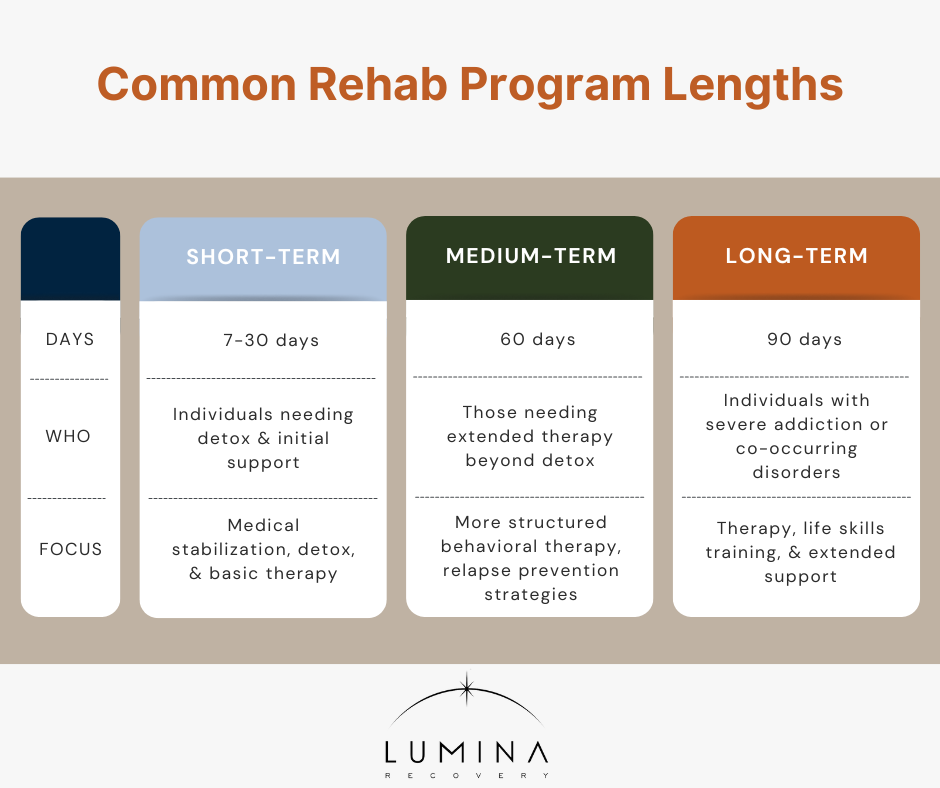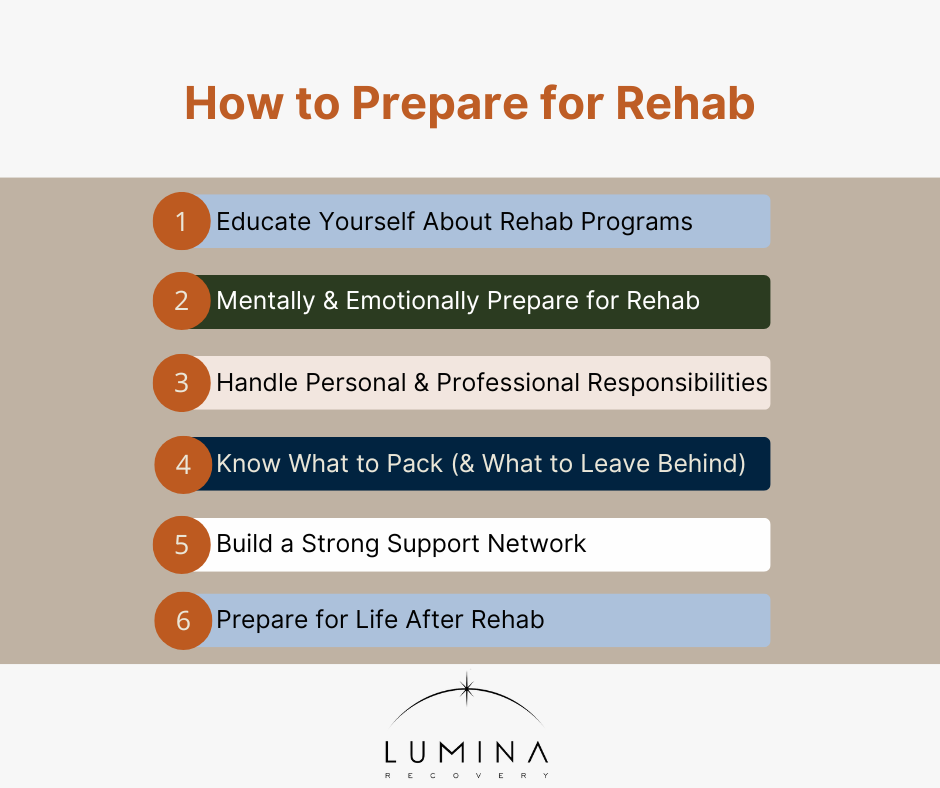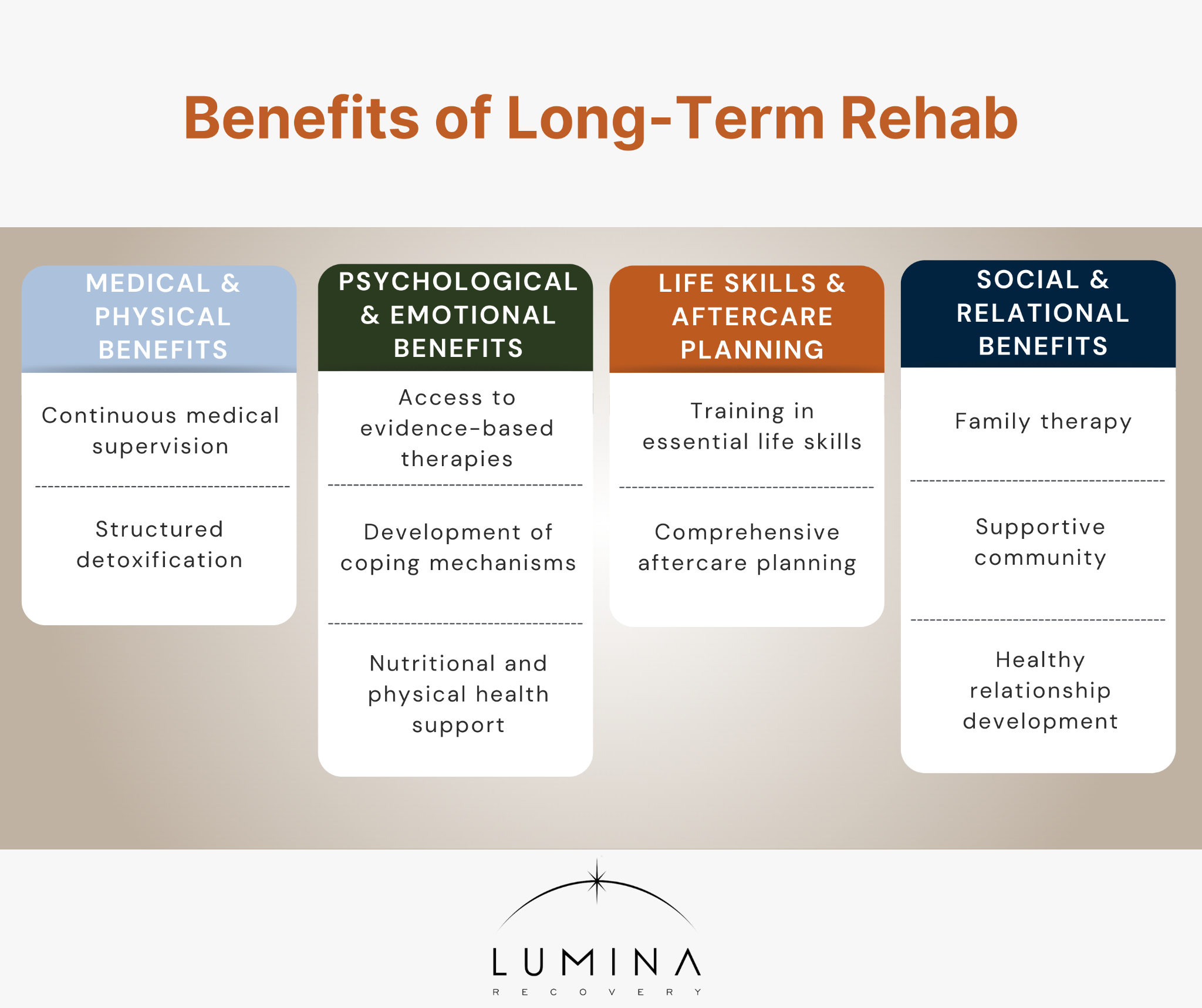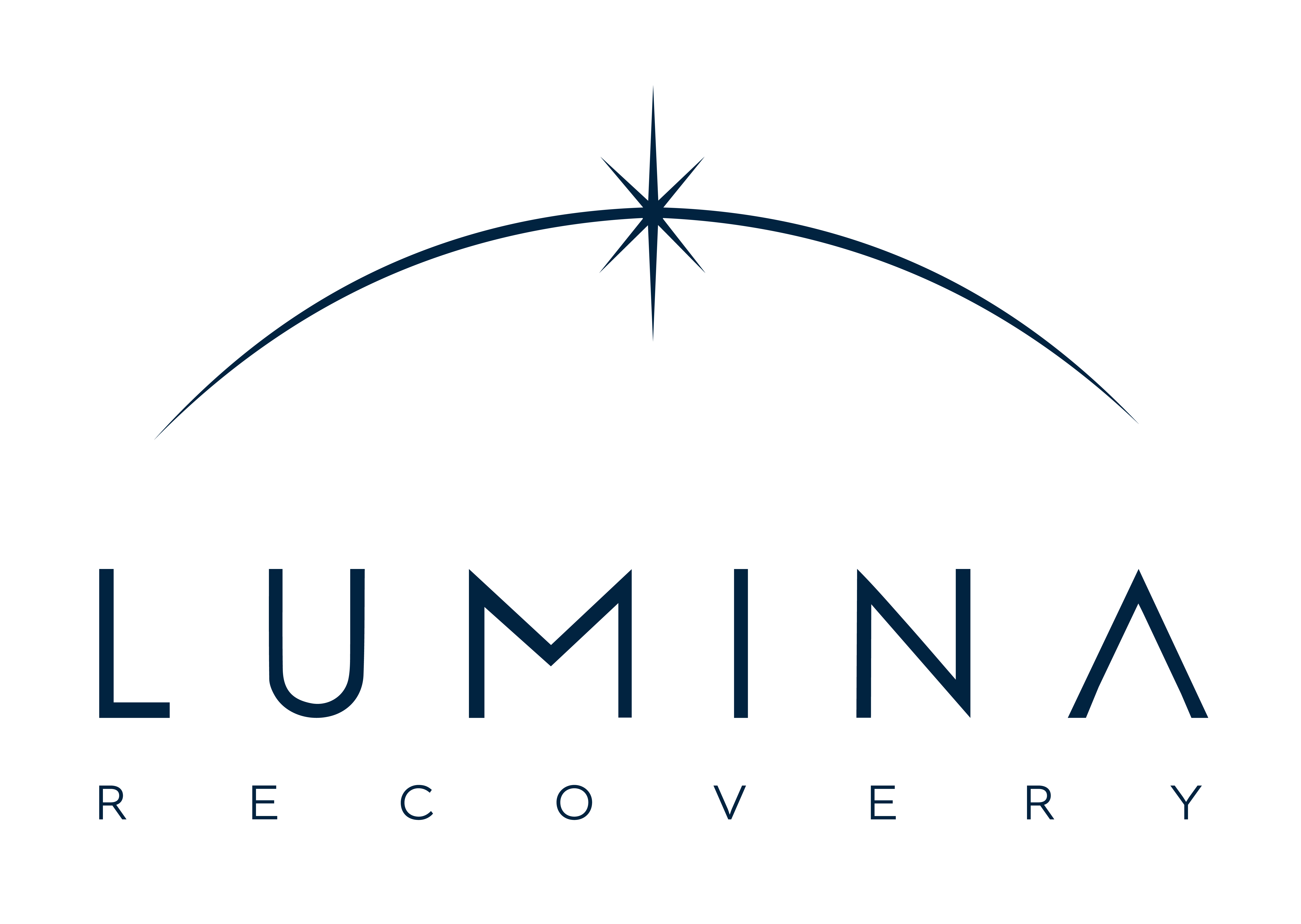
Our Addiction Resources
Navigating the world of addiction and recovery can be overwhelming. We’re here to provide clear, compassionate education and guidance. From practical advice for maintaining sobriety to informational guidance on the long-term effects of substance abuse, our content is a beacon of hope and understanding.
Our Team is Ready are ready to take your call
Call us Today!
or we can call you. Fill out form below
Our Blog

Important Sober Living Life Skills
In the journey towards recovery and sobriety, mastering life skills in a sober living environment plays a crucial role. Sober living homes provide a supportive, structured environment where individuals can practice and enhance these vital skills as part of their continuum of care.
Often, residents in sober living homes are also attending outpatient rehabilitation programs, allowing them to integrate their learnings into daily life. This synergy creates a nurturing space for personal growth and long-term recovery.
At Lumina Recovery, we aim to provide you with sober living skills for you to apply to your everyday life, inside and outside of recovery.
Understanding and Managing Emotions
The journey of recovery is often marked by a heightened awareness of emotions. In a sober living setting, one of the most vital skills residents learn is emotional regulation. This process begins with recognizing and accepting emotions without judgment.
It’s common for individuals in recovery to experience a wide range of feelings, from joy and hope to anger and sadness. Navigating these emotions without resorting to substance use is a critical aspect of sustained sobriety.
Mindfulness and meditation, powerful life skills in recovery, help residents stay present and grounded, allowing them to observe their emotions without being overwhelmed by them.
Cognitive behavioral strategies teach individuals to challenge and change negative emotions and thought patterns that can lead to distress. Support groups and one-on-one counseling provide safe spaces to explore and understand these emotions deeply.
The goal is to equip residents with the skills to manage stress, anxiety, and other intense emotions healthily and productively, fostering emotional resilience.
Effective Communication
Effective communication is a cornerstone of building and maintaining healthy relationships, both within the sober living environment and beyond. It involves more than just talking—it’s about conveying thoughts and feelings in a way that is clear, respectful, and constructive.
In sober living homes, residents are encouraged to practice open and honest communication. This includes learning to articulate needs and boundaries, as well as being receptive to the needs and boundaries of others.
Active listening is another crucial component of effective communication. It’s about fully concentrating on the speaker, understanding their message, and responding thoughtfully. Residents learn to engage in empathetic listening, which helps in building mutual respect and understanding within the community.
Disagreements are natural in any communal living setting, but in sober living homes, residents learn to problem solve and resolve conflicts in a healthy manner. This involves negotiation, compromise, and sometimes seeking mediation from staff members.
By honing these important life skills, residents are better prepared to rebuild relationships outside the treatment facility environment and to establish new, supportive connections that aid in their recovery journey.
Personal Responsibility
In sober living environments, personal responsibility is a key focus. This encompasses a range of activities and attitudes, all aimed at fostering independence and accountability.
As part of a healthy routine, residents are typically responsible for maintaining a clean living space, which includes chores such as cleaning, cooking, and laundry. These tasks might seem mundane, but they instill a sense of ownership and pride in one’s environment, recognizing the importance of self-care.
Beyond household responsibilities, personal responsibility extends to self-care and management of one’s life. This includes attending therapy sessions and meetings punctually, managing medication regimes if applicable, and staying committed to the rules of the sober living home.
Residents are also encouraged to take responsibility for their actions, particularly in how they affect others in the community. This helps in fostering a sense of community and mutual respect, which are vital in a supportive living environment.
Healthy Lifestyle Habits
Maintaining healthy lifestyle habits are essential life skills for everyone, including recovering addicts. This is not just about physical health, but also about creating routines and behaviors that support overall well-being.
In sober living homes, residents are encouraged to engage in regular physical activity. Exercise not only improves physical health but also helps in managing stress, improving mood, and boosting self-esteem.
Residents often have access to resources that help them learn about healthy eating. This may include planning and preparing balanced meals, understanding nutrition, and making informed food choices.
Sleep is another critical aspect of a healthy lifestyle that is emphasized in sober living. Establishing a regular sleep schedule helps in maintaining a balanced mood, improves cognition, and is vital for overall health.
By implementing these healthy sets of life skills, residents lay the foundation for a life that supports sobriety and mental health. They learn that taking care of their body is a key aspect of taking care of their mind, and vice versa.
Financial Management
Financial responsibility is a crucial aspect of sober living. Many individuals in recovery may have faced financial challenges or instability as a result of their substance abuse, whether from drugs or alcohol.
In sober living environments, residents learn the basics of financial management. This includes creating and sticking to a budget, managing bills and expenses, and understanding the importance of saving.
Employment is often a key component of financial management in recovery. Residents are encouraged to seek employment or educational opportunities to improve their job prospects and financial stability. This not only aids in financial independence but also helps in building self-esteem and a sense of purpose.
Relapse Prevention Planning
Relapse prevention planning is a critical skill in maintaining long-term sobriety. In sober living homes, residents work with counselors and peers to identify personal triggers that might lead to relapse.
These may include specific situations, emotional states, or people that increase the risk of substance use. Understanding these triggers is the first step in developing effective strategies to manage them.
Residents learn coping mechanisms and skills to deal with potential relapse scenarios. This might include seeking support from peers or counselors, engaging in healthy activities to distract from cravings, or removing oneself from triggering situations.
Developing a personalized relapse prevention plan provides residents with a roadmap to navigate the challenges of recovery, increasing their confidence in maintaining sobriety.
Building and Maintaining Healthy Relationships

Sober living environments offer a unique opportunity to build and strengthen healthy relationships. Recovery often involves reevaluating existing relationships and establishing new, supportive connections. Residents learn the importance of surrounding themselves with people who respect and support their sobriety.
Skills such as setting boundaries, effective communication, and recognizing unhealthy relationship patterns are emphasized. The sober living community itself provides a network of individuals who share similar experiences and goals, fostering a sense of camaraderie and mutual support.
Time Management and Goal Setting
Effective time management and goal setting are essential skills for sober living. Residents learn to structure their days in a way that balances treatment, work, personal time, and leisure. This helps in creating a sense of normalcy and routine, which is important in recovery.
Setting goals, both short-term and long-term, is a key focus. These goals might relate to sobriety, personal development, career, or education. Learning to set realistic, achievable goals gives residents a sense of direction and purpose.
Learn More Sober Living Life Skills With Lumina Recovery
By embracing these skills, individuals not only work towards sobriety but also towards a fulfilling, balanced, and healthy life. The journey of recovery is a transformative one, and mastering these life skills is a testament to the strength and commitment of each person on this path.
At Lumina Recovery, we offer outpatient programs and therapy options for those in sober living facilities to enhance their recovery journey. Remember, every step forward in developing these skills is a step closer to a life of fulfillment and sobriety.
Contact our team of professionals today to learn more about our sober living facilities and continuum of care.

How to Make Sober Friends
Embarking on a journey of sobriety can be transformative, yet challenging. A critical aspect of this journey is surrounding yourself with the right people who support your sober lifestyle.
Making sober friends isn’t just about avoiding triggers—it’s about finding companionship, understanding, and shared experiences in a world that often revolves around substance use.
At Lumina Recovery, we aim to guide you through the process of making sober friends, offering practical advice and compassionate insight for navigating this vital aspect of your recovery journey.
Understanding the Importance of Sober Friendships
The Role of Support in Sobriety
Sobriety is a path often laden with challenges and temptations. During this journey, the role of a supportive social circle becomes crucial. Finding sober friends provides more than just company.
These are people who share your perspective, offer an understanding ear, and a shoulder to lean on. These relationships create a safety net, making it easier to resist temptations and stay committed to sobriety.
Benefits of Having Sober Friends
Having sober friends can significantly enhance your quality of life during recovery. Meeting sober people brings numerous benefits.
People in recovery understand the struggles and victories of sobriety without judgment, offer practical advice and coping strategies, and help normalize a sober lifestyle.
Importantly, they also provide opportunities for fun sober activities and relaxation that don’t center around substance use, opening up new avenues for enjoyment and fulfillment.
Finding the Right Environment
Sober Social Groups and Activities
Engaging in sober social groups and activities is a fantastic way to meet like-minded individuals.
Look for joining a support group that is local and focused on sobriety. Other activities include sober sports leagues, or hobby-based clubs like book clubs, art classes, or hiking groups that promote a substance-free environment.
These sober meetups not only help you make sober friends but also enrich your life with new interests and hobbies.
Volunteer Opportunities and Sober Events
Volunteering is another excellent way to connect with sober individuals while giving back to the community. Many organizations and events specifically cater to those in recovery or promote sober living.
Additionally, attending alcohol-free events like concerts, festivals, or speaking engagements can be both inspiring and a fertile ground for meeting new people and good friends who are on a similar path.
Leveraging Support Groups
Attending Meetings like AA or NA
Support groups such as Alcoholics Anonymous (AA) or Narcotics Anonymous (NA) are invaluable resources for making sober friends. These meetings offer a space where individuals share their experiences, strengths, and hopes in recovery.
Regular attendance helps in building familiarity and trust with other members, fostering strong bonds over time. These groups not only provide emotional support but also a sense of belonging and community.
Engaging in Group Activities and Discussions
Participating actively in group activities and discussions is crucial in forming connections. Engage in post-meeting discussions, volunteer for service positions within the group, or attend group outings.
These activities allow you to interact more personally with members, giving you the opportunity to develop deeper relationships beyond the structured meeting settings.
Online Communities and Social Media
Finding Sober Communities Online
The digital age offers extensive opportunities to connect with sober communities online. There are many websites, forums, and social media platforms these days dedicated to recovery and fighting substance use disorders.
These platforms allow you to join discussions, share experiences, and seek advice from a global community. They can be especially helpful if you live in an area with limited in-person meeting options or prefer the anonymity and convenience of online interactions.
Navigating Social Media for Sober Friendships
Social media can be a double-edged sword, but when used mindfully, it’s an excellent tool for making sober friends. Follow sober influencers, join sober challenge Facebook groups, or participate in recovery-themed hashtags.
Be cautious of triggers on these platforms and curate your feed to include inspiring and motivating sober content to help your mental health. Connecting with others in recovery on social media can lead to meaningful friendships both online and offline.
Building Genuine Connections
Starting Conversations and Opening Up
Initiating conversations and being open about your journey can pave the way for meaningful connections. Start by sharing your story at meetings or in social groups, and show interest in others’ experiences.
This exchange of personal stories fosters trust and empathy, essential ingredients for lasting friendships. Remember, it’s important to share at your own comfort level and pace, and to respect others’ boundaries as well.
Sharing Experiences and Listening Actively
Active listening is just as important as sharing. When others speak, give them your full attention, showing empathy and understanding.
Share your experiences in a way that resonates with their situation, offering insights or advice if appropriate. This mutual exchange creates a deeper connection, rooted in shared experiences and understanding, and builds a foundation for a supportive friendship.
Maintaining Boundaries and Self-Care
Setting Healthy Boundaries in Relationships
In sobriety, it’s crucial to establish and maintain healthy boundaries. Be clear about your limits, especially regarding exposure to triggers or situations that could jeopardize your recovery.
Communicate your needs and boundaries to your friends and respect theirs in return. This mutual understanding helps maintain a safe and supportive environment for everyone.
Prioritizing Self-Care in Friendships
Prioritizing self-care is an important aspect of maintaining sobriety and healthy friendships. Engage in activities that nurture your well-being, both alone and with friends.
Encourage and support each other in self-care practices, whether it’s through meditation, exercise, hobbies, or relaxation. Remember, a true friend will support your self-care journey and respect the choices you make for your well-being.
Being Open to Diverse Friendships

Embracing Different Perspectives and Backgrounds
Sobriety brings together people from all walks of life, each with their own unique stories and perspectives. Be open to forming friendships with individuals who might have different backgrounds, experiences, or recovery journeys.
This diversity can enrich your understanding of sobriety and the world, offering fresh perspectives and insights. Embracing these differences can lead to a more fulfilling and enlightening recovery journey.
Learning from Others’ Recovery Journeys
Every person in recovery has a unique set of experiences and wisdom. Take the opportunity to learn from them.
Engage in conversations about their coping strategies, motivations, and insights. This exchange of knowledge not only strengthens friendships but also provides valuable lessons and tools that can aid in your own recovery process.
Staying Patient and Positive
Understanding That Building Friendships Takes Time
Building new friendships, especially in recovery, can be a gradual process. It’s important to be patient and not get discouraged if connections don’t form immediately.
Relationships grow over time through shared experiences, trust, and mutual support. Stay committed to engaging with others, and allow friendships to evolve naturally.
Keeping a Positive Outlook and Being Yourself
Maintaining a positive outlook is key in making and keeping friends. Positivity attracts people and fosters an environment where friendships can thrive.
Be authentic and true to yourself—genuine connections are formed when people relate to who you truly are. Remember, your sobriety journey is a strength, and sharing your authentic self can be an inspiration to others.
Find Sober Friends With Lumina Recovery
Making sober friends is a journey that requires patience, openness, and a commitment to your sobriety. By engaging in supportive environments, leveraging groups, connecting online, and building genuine relationships, you can form a network of friends who not only understand your journey but also enrich your life in numerous ways.
At Lumina Recovery, we offer group therapy and specialized programs to help you connect to those with similar experiences. Remember, every step you take towards building sober friendships is a step towards a stronger, healthier, and more fulfilling life in recovery.
Reach out to our supportive team of professionals today to learn more.

How Long Are Rehab Treatment Programs?
The length of rehab varies based on factors such as the severity of addiction, the substance involved, and the individual’s progress. Most programs last anywhere from a week to 90 days and fall into one of two categories: inpatient or outpatient addiction treatment.
While some people benefit from shorter stays, others require long-term drug rehabilitation for lasting recovery. Understanding how long drug rehab takes is crucial in selecting the right program.
Rehab Treatment Durations
Rehab programs provide structured support to help individuals recover from addiction. The duration of a program depends on the level of care required and the type of program chosen.
There are two main types of rehab:
- Inpatient rehab, also called residential treatment, is an option that requires individuals to stay at a facility full-time and typically lasts 30 to 90+ days. Detox, which usually lasts 7 to 14 days, is often the first step before transitioning into a residential rehab program.
- Outpatient rehab allows individuals to receive treatment while living at home, offering flexibility for those with work or family commitments. These programs often last between 60 and 90 days. Examples include intensive outpatient programs (IOP), partial hospitalization programs (PHP), telehealth, and standard outpatient therapy.

Common Rehab Program Lengths
How long is rehab? Rehab programs are categorized as short-term, medium-term, and long-term addiction treatment.
Short-Term Programs (7-30 Days)
A short-term rehab program focuses on detox and initial recovery support. These programs work well for individuals with mild addiction, providing a structured environment for beginning recovery.
However, relapse risk may be higher due to the limited time for behavioral therapy. Individuals who choose a short-term program often transition into outpatient care to continue their recovery journey.
Medium-Term Programs (60 Days)
A 60-day rehab program offers more time to focus on behavioral therapy, relapse prevention skills, and deeper healing. It balances accessibility and comprehensive treatment, making it a solid choice for individuals with moderate addiction.
This extra time allows individuals to develop coping skills and work through underlying issues that may have contributed to substance abuse.
Long-Term Programs (90 Days)
Long-term drug rehabilitation provides the most comprehensive approach to recovery. These programs offer structured therapy, medical support, and relapse prevention planning to promote lasting recovery.
Individuals in long-term programs often work through multiple phases of treatment, transitioning from intensive inpatient care to outpatient programs for continued support.
What Determines the Length of Rehab?
Several factors affect how long a substance abuse program takes:
- Severity of addiction. Individuals with severe substance use disorder often require longer treatment.
- Type of substance used. Different substances, such as alcohol or opioids, have varying withdrawal timelines, affecting the required rehab duration.
- Co-occurring disorders. Mental health conditions may require additional treatment time to address underlying psychological factors contributing to addiction.
- Individual progress. Personalized treatment plans adjust based on the individual’s recovery progress. Some individuals may need extra time to fully engage in therapy and develop lasting coping skills.
- Support system & environment. A strong support system can influence rehab duration and long-term success. Individuals without a stable home environment may benefit from extended care in a residential setting.
The Importance of Personalized Treatment Plans
Recovery is not one-size-fits-all. Rehab facilities tailor programs based on:
- The individual’s history with addiction
- Co-occurring mental health conditions
- Medical and psychological needs
- Personal recovery goals
A personalized treatment plan ensures that each person receives care suited to their unique needs. Treatment professionals assess individuals and adjust their program length as needed.
The length of rehab an individual undergoes is crucial to ensuring long-term success. Ongoing evaluations help determine when a person is ready to transition to a less intensive level of care.
Additionally, therapy approaches differ based on individual needs. Cognitive behavioral therapy (CBT), dialectical behavior therapy (DBT), group therapy, and family counseling all contribute to recovery and impact treatment duration. Having a plan that incorporates these elements significantly increases the chances of sustained sobriety.

How to Choose the Right Rehab Duration for You
Deciding how to choose the right rehab program and length requires careful consideration of personal circumstances. Some key factors include:
- Severity of addiction. Longer programs are recommended for individuals with a long history of substance use.
- Mental health considerations. Co-occurring disorders often require a more extended treatment period.
- Support system. A strong support network at home may allow for a shorter inpatient stay followed by outpatient care.
- Relapse history. Those with previous relapses may benefit from long-term addiction treatment to develop stronger coping mechanisms.
Consulting with Treatment Professionals
Speaking with a rehab specialist is essential to determining the appropriate program length. Professionals conduct assessments to evaluate addiction severity, mental health conditions, and personal goals to recommend an effective treatment plan.
FAQs
How long does rehab typically last?
Rehab programs vary in length, commonly offering 30-day, 60-day, and 90-day options. The appropriate duration depends on individual needs and the severity of the addiction.
How long is inpatient rehab?
Inpatient rehab typically lasts between 30 and 90 days, with some long-term programs extending beyond 90 days for individuals requiring more comprehensive treatment.
How long does a substance abuse program take?
The length of a substance abuse program depends on individual progress, the severity of addiction, and whether outpatient or inpatient treatment is chosen.
How long do people stay in rehab?
Most people stay in rehab for at least 30 days, but longer stays—such as 60 or 90 days—can increase the chances of long-term recovery.
How long is alcohol rehabilitation?
Alcohol rehab durations vary based on addiction severity. Standard programs last between 30 and 90 days, though some individuals may need longer treatment.
Find the Right Treatment Length with Lumina Recovery
Choosing the right rehab duration is critical for long-term recovery success. At Lumina Recovery, we offer personalized inpatient and outpatient programs to meet each individual’s needs. Our dual diagnosis treatment ensures that those with co-occurring mental health conditions receive comprehensive care.
If you’re wondering, “How long does rehab last?” our expert team can help guide you to the right program. Contact us today to start your recovery journey.

The Importance of Self-Care in Drug and Alcohol Rehabilitation
In the journey towards recovery from drug and alcohol addiction, self-care plays a pivotal role. It’s not just about treating the addiction; it’s about nurturing the whole person—body, mind, and spirit.
This holistic approach is crucial for long term recovery and well-being. At Lumina Recovery, we aim to explore why self-care in recovery is vital during drug and alcohol rehabilitation and provide practical tips to incorporate it into your recovery journey.
Understanding Self-Care in Rehabilitation
Self-care in the context of drug and alcohol rehabilitation is more than just a buzzword—it’s a critical component of the recovery process. It involves actively taking steps to care for oneself in a holistic manner.
This means paying attention to your physical and mental health. During rehabilitation, individuals often face intense emotions and physical changes as their bodies and minds heal. Self-care practices offer a way to navigate these challenges more effectively.
An important part of self-care is acknowledging and respecting one’s own needs. This might involve recognizing when to take a break, when to seek help, and how to set healthy boundaries. It also includes engaging in activities that promote relaxation and joy, which can be particularly empowering in a phase of life that can feel overwhelming and restrictive.
For many in recovery, self-care is a new concept. Addiction can lead to neglect of basic self-care routines. Rehabilitation provides an opportunity to relearn these habits. It’s important for individuals to understand that self-care is not selfish—it’s an essential part of healing.
Physical Self-Care
Physical self-care is foundational in the addiction recovery process. Substance use disorders can take a significant toll on the body, and part of the healing process involves addressing these physical impacts.
Exercise and Physical Activity
Engaging in regular physical activity is crucial. It helps in rebuilding physical strength, improving cardiovascular health, and releasing endorphins, which are natural mood lifters.
Activities don’t have to be strenuous—even gentle exercises like walking or stretching can have profound benefits. For many, connecting with other people in group sports or exercise classes can provide a sense of community and accountability.
Nutrition and Hydration
Drugs and alcohol can deplete the body of essential nutrients, so a balanced diet rich in vitamins, minerals, and antioxidants is vital. Rehabilitation centers often offer nutritional counseling to help individuals understand and meet their dietary needs.
Staying hydrated is equally important as it aids in detoxification and overall bodily functions.
Rest and Sleep
The body heals and rejuvenates during sleep, making it a crucial aspect of physical self-care. Many individuals in recovery struggle with sleep disturbances.
Establishing a regular sleep routine, creating a comfortable sleeping environment, and practicing relaxation techniques before bed can help improve sleep quality.
Mental and Emotional Self-Care
Mental and emotional self-care is essential in the journey of recovery, as addiction often coexists with mental health issues such as anxiety, depression, or trauma. This aspect of self-care focuses on nurturing mental health and emotional resilience.
Mindfulness and Meditation
These practices are increasingly recognized for their benefits in managing addiction and mental health. Mindfulness helps to stay in the present moment and reduces the impact of negative thoughts and emotions. Meditation can reduce stress, improve concentration, and promote a sense of peace.
Therapy and Counseling
Professional support is vital in addressing the psychological aspects of addiction. Therapy provides a safe space to explore underlying issues, understand emotional triggers, and develop healthier coping mechanisms.
Different therapeutic approaches, like cognitive behavioral therapy (CBT) or dialectical behavior therapy (DBT), can offer tailored strategies for recovery.
Journaling
Writing down thoughts and feelings is a powerful tool for mental and emotional wellness. It can help in processing emotions like stress and anxiety, tracking progress, and recognizing patterns or triggers in thoughts and behaviors.
Journaling also offers a private, reflective space for self-expression and self-discovery.
Social Self-Care
Social connections play a crucial role in rehabilitation. They provide support, reduce feelings of isolation, and can offer new perspectives and coping strategies.
It’s important to surround oneself with people who understand and support the recovery journey. This could include group therapy to connect with other people in recovery, sober friends, or family members who encourage healthy choices. These networks provide a sense of belonging and accountability.
Learning to set and maintain healthy boundaries is a critical aspect of social self-care for addiction. It involves saying no to unhealthy relationships or situations that may jeopardize recovery. Setting boundaries is a way of honoring one’s own needs and well-being.
Spiritual Self-Care
For many, recovery is not just a physical and mental journey but also a spiritual one. Spiritual self-care can offer a sense of purpose, connection, and peace.
Whether through organized religion, spiritual practices, or personal beliefs, many find strength and hope in a higher power or a greater sense of purpose. This connection can be deeply comforting and motivating throughout the recovery process.
Engaging with nature can be a spiritual experience for some. The beauty and tranquility of the natural world can offer a sense of peace and perspective. Activities like hiking, gardening, or simply spending time in a park can be rejuvenating.
The Role of Self-Care in Preventing Relapse

The significance of self-care in preventing relapse cannot be overstated. Recovery from active addiction is an ongoing process, and relapse can be a part of that journey. However, consistent self-care practices can greatly reduce the risk.
Stress Management
Stress is a major trigger for relapse. Regular self-care routines like exercise, meditation, or engaging in hobbies can help manage stress levels and prevent substance abuse.
Recognizing Triggers
Self-care involves being mindful of emotional and environmental triggers that might lead to cravings. By understanding these triggers, individuals can develop coping strategies to address them effectively.
Building Healthy Coping Mechanisms
Instead of turning to substances, self-care teaches individuals to use healthier coping mechanisms like talking to a friend, engaging in physical activity, or practicing relaxation techniques.
Tips for Integrating Self-Care Into Daily Life
Incorporating self-care into everyday life can be challenging, especially during the early stages of recovery. Here are some tips to help make self-care a regular part of life:
- Begin with small, achievable self-care activities. This could be as simple as taking a short walk, reading a book, or practicing five minutes of meditation.
- Consistency is key in establishing self-care habits. Try to incorporate at least one self-care activity into your daily routine.
- Work with a therapist or counselor to create a personalized self-care plan. This plan should include activities for physical, mental, emotional, social, and spiritual well-being.
- Don’t hesitate to seek help from professionals for guidance on how to effectively practice self-care, especially when it comes to mental and emotional well-being.
- Share your self-care goals with friends, family, or a support group who can provide encouragement and accountability.
Practice Self-Care With Lumina Recovery
Self-care is not a luxury—it’s a necessity, especially during the challenging journey of recovery from drug and alcohol addiction. By taking care of your physical, mental, emotional, social, and spiritual needs, you build a strong foundation for a healthy, sober life.
Lumina Recovery offers a variety of therapy options and dual diagnosis support to help you or a loved one focus on self-care. Remember, every step you take towards self-care is a step towards a brighter, healthier future.
Contact us today to learn more about how we can help with your addiction and self-care needs.

How to Prepare for Rehab
Deciding to go to rehab is a monumental step toward reclaiming your life from addiction. It’s a time filled with hope, but it can also bring uncertainty and anxiety. You may have questions about what to do before going into rehab, how to check into rehab, and how to ensure you’re setting yourself up for success.
This guide will help ease your concerns by covering essential steps to prepare for rehab—mentally, emotionally, and logistically. By taking these steps in advance, you can focus fully on your recovery once you begin treatment.

1. Educate Yourself About Rehab Programs
Before going to rehab, familiarize yourself with the different types of treatment programs available.
Understand Treatment Options
- Detox programs help remove substances from your body under medical supervision.
- Inpatient rehab provides 24/7 care in a structured environment.
- Outpatient treatment allows flexibility while receiving therapy and support.
- Medication-assisted treatment (MAT) uses FDA-approved medications to aid recovery.
- Dual Diagnosis Treatment addresses co-occurring mental health conditions alongside addiction.
Research Your Facility
Every rehab center offers different programs and approaches. Research facilities to find the one that aligns with your needs. Reading reviews, asking for referrals, and speaking with admission counselors can help guide your decision.
2. Mentally and Emotionally Prepare for Rehab
Entering rehab is a significant life change, and preparing yourself mentally and emotionally can make the transition smoother.
Accept the Process
Success in rehab starts with the right mindset. Acknowledge that recovery is a journey, not a quick fix. Understand that challenges will arise, but facing them with determination will help you grow. Accepting that rehab is a tool for transformation can make the process easier.
Coping With Pre-Rehab Anxiety
It’s natural to feel apprehensive before going to rehab. Consider using mindfulness techniques like meditation, deep breathing, or journaling to process your emotions. Therapy sessions before rehab can also provide valuable support in preparing for this life-changing experience.
Set Realistic Goals
Establish personal goals for your rehab journey. These could include:
- Learning healthier coping mechanisms
- Strengthening your emotional resilience
- Building a support network for post-rehab success
By setting goals, you’ll have a clear focus that keeps you motivated during treatment.
3. Handle Personal and Professional Responsibilities
Before entering rehab, it’s important to ensure your personal and professional obligations are in order so you can focus entirely on your recovery.
Work and Financial Planning
Inform your employer about your rehab stay. Many workplaces offer leave policies for medical treatment, including addiction recovery. If necessary, delegate responsibilities to a trusted colleague.
To ensure financial stability while you’re in rehab, set up automatic bill payments or designate a trusted family member to manage your finances.
Family and Dependents
If you have children, pets, or other dependents, arrange for their care ahead of time. This might involve:
- Coordinating with a partner, family member, or trusted friend
- Exploring temporary childcare options
- Making arrangements for pet care
Legal Considerations
If you have pending legal matters, address them before entering rehab. This may include arranging power of attorney, custody agreements, or other essential legal documentation.
4. Know What to Pack (and What to Leave Behind)
Each rehab facility has different guidelines on what you can and cannot bring. However, here are some general guidelines:
Essentials to Bring
- A valid ID and insurance information
- Comfortable, season-appropriate clothing
- Approved prescribed medications (with original labels)
- Toiletries (alcohol-free, if required by the facility)
Optional Items
- A journal for personal reflections
- Family photos for emotional support
- Approved books or reading materials
Prohibited Items
- Drugs, alcohol, or any substance not approved by the facility
- Weapons or other dangerous objects
- Unapproved electronics (many rehabs restrict phones and laptops to minimize distractions)
5. Build a Strong Support Network
Recovery is easier when you have a strong support system in place.
Inform Loved Ones
Let close family and friends know about your decision to check into rehab. Their support will be crucial during and after treatment. Open communication can help ease concerns and encourage positive reinforcement.
Join Recovery Groups
Even before going to rehab, you can start engaging with recovery communities. Consider attending 12-step meetings or joining online support groups to connect with others on a similar path.
Set Communication Expectations
Rehab programs may have communication restrictions, such as limited phone or internet access. Inform your loved ones about these policies and establish expectations for staying in touch.

6. Prepare for Life After Rehab
Successfully completing rehab is a major achievement, but the journey to lasting sobriety continues beyond treatment. Planning for life after rehab ensures you have the support and resources necessary to maintain your progress.
Research Outpatient and Aftercare Support
Recovery doesn’t end after rehab. Before you go to rehab, research outpatient programs, support groups, or sober living options. Having a plan for ongoing care can help ease the transition back to daily life.
Identify Triggers
Reflect on situations, environments, or emotions that may lead to cravings. Work with a therapist to develop coping strategies that will help you maintain long-term sobriety.
Explore Continued Therapy Options
Consider post-rehab therapy options such as:
- Cognitive behavioral therapy (CBT) helps address thought patterns that contribute to addiction.
- Dialectical behavior therapy (DBT) enhances emotional regulation and mindfulness.
- Family therapy strengthens relationships and improves communication with loved ones.
- Group therapy builds a supportive network with others in recovery.
Frequently Asked Questions (FAQs)
How do you get into rehab?
To get into rehab, start by researching treatment centers that fit your needs. Reach out to the facility to discuss your situation, verify insurance, and complete any necessary pre-admission requirements. Some people may need a referral from a doctor or therapist, while others can self-enroll.
What do you bring to rehab?
Your specific facility will advise you on what to bring to rehab. This may include essential items such as identification, insurance information, prescribed medications, toiletries, and comfortable clothing. Optional items may include a journal, family photos, and approved reading materials. Leave behind any prohibited items such as unapproved electronics, drugs, alcohol, and weapons.
How do you check yourself into rehab?
Knowing how to check yourself into rehab involves selecting a facility, verifying your insurance or arranging payment, and completing an intake assessment. Once the logistics are settled, you’ll set a date to enter the program and begin your treatment journey.
What can you go to rehab for?
Rehab centers treat various substance use disorders, including alcohol, opioids, cocaine, methamphetamine, and prescription drugs. Many facilities also offer treatment for co-occurring mental health conditions such as anxiety, depression, and PTSD.
A Fresh Start Begins With Lumina Recovery
Preparing for rehab may feel overwhelming, but taking proactive steps will help you enter treatment with confidence. From managing responsibilities to packing the right essentials, every step you take now will make your journey smoother.
At Lumina Recovery, we provide comprehensive support through detox programs and residential inpatient treatment, ensuring a structured and effective recovery process.
If you’re ready to take the next step and learn how to go to rehab, contact us today for expert guidance and compassionate care.

How Grief Can Lead to Addiction
Grief, a natural response to loss, is an emotion that everyone experiences at some point in their lives. It can arise from the death of a loved one, the end of a significant relationship, or any other major life change.
While grief is a normal process, it can become overwhelming, leading some individuals down a path towards addiction as a coping mechanism. At Lumina Recovery, we aim to explore the connection between grief and substance addiction, offering understanding and guidance for those who are navigating these challenging waters.
Understanding Grief
Grief is a deeply personal and universal experience, a natural response to loss that touches every life at some point.
Whether it stems from the death of a loved one, the dissolution of a significant relationship, or a transformative life change, grief manifests in various ways, unique to each individual. It’s a complex blend of emotional, cognitive, physical, and behavioral responses that vary in intensity and duration.
The journey through grief is often described in stages, though it’s important to remember that this process is not linear nor the same for everyone. The stages of the grief process, as originally conceptualized by Elisabeth Kübler-Ross, include denial, anger, bargaining, depression, and acceptance.1
Some people may cycle through these stages, while others might experience only a few of them in a different order. Understanding that grief is a multifaceted and highly personal process is crucial in acknowledging and respecting each individual’s unique experience.
The Link Between Grief and Addiction
The intense emotional pain of grief and loss can sometimes become unbearable, leading individuals to seek relief in various ways, including substance use. This coping mechanism can start innocently, perhaps with increased alcohol consumption or the use of prescription drugs for anxiety or sleep.
However, the temporary escape they provide from the pain of loss can quickly become a dependency, as the brain starts to associate substance use with relief from emotional distress.
This vulnerability to addiction during grief is exacerbated by several factors. The isolating nature of grief can lead to a lack of social support, making it easier to turn to substances rather than people for comfort.
Additionally, the overwhelming emotions associated with grief can impair judgment and decision-making, increasing the risk of substance use disorders and alcohol use disorders. Furthermore, if an individual has a prior history of substance abuse, the risk is even higher, as grief can trigger a relapse or intensify existing addictive behaviors.
In understanding the link between grief and addiction, it’s vital to recognize that turning to substances is often a sign of someone trying to manage their pain in the only way they feel they can at that moment. This perspective fosters a compassionate view of both grief and addiction, emphasizing the need for empathetic support and professional guidance.
Recognizing the Signs of Grief-Related Addiction
Recognizing the signs of grief-related addiction is crucial for timely intervention and support. Behavioral changes are often the most visible indicators.
This may include a noticeable increase in substance use, whether it’s alcohol, prescription medication, or illegal drugs. Changes might also manifest in neglecting responsibilities, withdrawing from social activities, or a marked decline in personal care and hygiene.
Emotional indicators are equally telling, though sometimes more subtle. Someone grappling with grief-related addiction might display signs of depression, anxiety, or mood swings. They may also express feelings of guilt or shame about their substance use, yet feel powerless to stop.
In some cases, there may be an increased tendency towards secrecy or defensiveness, especially when questioned about their habits. It’s important to approach these signs with empathy and understanding, acknowledging the deep pain and complexity of the emotions involved.
Healthy Coping Mechanisms for Grief
Amidst the pain of loss, finding healthy ways to cope is essential. Seeking support plays a critical role in this process. Professional therapy can provide a safe space for individuals to process their grief and develop healthy coping strategies. Support groups, either in-person or online, offer a sense of community and understanding from others who are experiencing similar losses.
Developing personal healthy grieving practices is also vital. This can include activities like journaling, engaging in creative outlets like art or music, or simply allowing oneself time and space to experience and express emotions. Physical activity, such as walking or yoga, can also be beneficial, providing a natural outlet for stress and helping to improve mood.
It’s important to remember that healthy coping doesn’t mean avoiding or suppressing the pain of grief. Rather, it involves finding ways to navigate the journey of loss in a manner that is respectful to one’s emotions and conducive to long-term healing.
Finding Help for Grief and Addiction

When grief intertwines with addiction, seeking professional help becomes a critical step towards healing. Addiction, a complex condition with psychological, physical, and emotional facets, often requires comprehensive treatment.
This may include therapy, medication-assisted treatment, and support groups tailored to addiction recovery. It’s essential to find a treatment program or a professional who understands the dual nature of dealing with grief and addiction, as addressing one without the other can be ineffective.
For those struggling with grief-related addiction, it’s crucial to acknowledge that seeking help is a sign of strength, not weakness. Professionals in the field of addiction and mental health are trained to provide compassionate, non-judgmental support and guidance.
They can offer strategies to manage cravings, cope with grief in healthier ways, and rebuild a life of sobriety and purpose. In some cases, inpatient treatment may be recommended to provide a structured and supportive environment for recovery.
Besides professional help, turning to trusted friends, family members, or community resources can also provide invaluable support. Sharing one’s struggles with understanding individuals can reduce feelings of isolation and provide a network of encouragement and accountability.
Additionally, many communities have resources specifically for those dealing with grief and addiction, such as specialized support groups or community health programs.
Lumina Recovery’s Grief-Related Addiction Support
While grief can indeed lead to addiction, it’s crucial to recognize that this doesn’t have to be the end of the story. As complicated as grief is, the right support and coping strategies help individuals navigate their grief without falling into the trap of addiction.
At Lumina Recovery, we offer dual diagnosis and therapy programs to support those on their journey with grief-related addiction.
Reach out to our team of professionals today to learn more about the support you can get for you or a loved one.
Sources:

Common Types of Drug Abuse on College Campuses
The transition to college life often brings with it a myriad of challenges and new experiences. For many students, this includes being exposed to, and in some cases, experimenting with drugs.
Understanding the landscape of drug abuse on college campuses is crucial, not just for students, but also for parents, educators, and health professionals.
This awareness helps in fostering a supportive environment that encourages healthy choices and provides necessary assistance.
1. Alcohol
Alcohol’s presence on college campuses is both prominent and culturally embedded.
The National Institute on Alcohol Abuse and Alcoholism shares that the 2021 National Survey on Drug Use and Health (NSDUH) found that 49.3% of full-time college students ages 18 to 22 drank alcohol in the past month. They also found that 27.4% of those students participated in binge drinking in the past month.1
It’s often a central feature of social gatherings, sports events, and parties, making it not only accessible but also socially endorsed in many circles. This normalization, however, obscures the potential for abuse and the serious consequences that can follow.
Excessive consumption can lead to immediate dangers like alcohol poisoning, accidents, and encourages high risk behaviors including unsafe sexual practices and aggressive conduct. Chronic use poses a threat to academic performance, as it can impair cognitive functions and lead to absenteeism.
Additionally, the pattern of heavy alcohol consumption established during college years can set the stage for long-term health issues, including addiction, liver diseases, and increased risk of certain cancers. The social and emotional impacts are also significant, potentially exacerbating underlying mental health issues and hindering the development of healthy coping mechanisms.
2. Marijuana
Marijuana use among college students has been rising, partially influenced by changing legal status and perceptions of its safety. Often viewed as a ‘less harmful’ drug, its widespread use masks potential risks.
Regular marijuana use, especially in high quantities, can impact cognitive functions—including memory, attention, and learning abilities. This is particularly concerning given the academic demands of college.
There’s also evidence suggesting that heavy, long-term marijuana use during young adulthood can lead to mental health problems, such as anxiety and depression, and can exacerbate existing conditions.
Moreover, dependency can develop, challenging the misconception that marijuana is not addictive. Socially, marijuana use can affect relationships and daily activities, and its illegal status in many areas can lead to legal troubles, further impacting a student’s academic and future career paths.
3. Prescription Stimulants (e.g., Adderall, Ritalin)
Prescription drug stimulants like Adderall and Ritalin are frequently misused in college settings, primarily due to their perceived benefits in enhancing focus and stamina for studying. This misuse often stems from the competitive academic environment and the pressure to excel.
However, substance abuse can lead to significant health risks. Short-term effects include increased heart rate and blood pressure, insomnia, and heightened anxiety, which can be particularly detrimental during stressful periods like exams.
Long-term misuse can lead to addiction, cardiovascular complications, and mental health issues such as depression. Additionally, reliance on these drugs can create a dependency that diminishes a student’s natural ability to concentrate and manage time effectively, ultimately impacting academic performance and personal well-being.
4. Prescription Painkillers (e.g., OxyContin, Vicodin)
The abuse among college students of prescription painkillers, such as OxyContin and Vicodin, is a critical issue on college campuses. Initially prescribed for pain relief, these opioids can be highly addictive and are often misused for their euphoric effects. The ease of obtaining these drugs, either through prescriptions or illicitly, contributes to their misuse. The consequences of this abuse are severe.
Physically, students risk developing a tolerance and dependency, leading to higher doses to achieve the same effects and increasing the risk of overdose. This misuse can also impair cognitive functions and academic performance.
Socially, students may find themselves in a cycle of substance abuse that affects relationships and participation in college activities, such as fraternities and sororities, and can also lead to legal issues.
The transition from prescription painkiller misuse to other forms of substance use disorders, including heroin, is also a significant concern.
5. Party Drugs (e.g., MDMA, Ecstasy, Cocaine)
Party drugs like MDMA (Ecstasy), cocaine, and others are particularly popular in social settings, such as nightclubs and college parties, where they are used for their euphoric and energy-boosting effects.
However, their use carries significant risks. MDMA can lead to severe dehydration, hyperthermia, and electrolyte imbalances, potentially resulting in life-threatening conditions.
Cocaine use increases the risk of heart attacks and strokes, even in young, healthy individuals. Chronic use of these substances can lead to long-term cognitive deficits, including memory and attention problems, as well as mental health issues like depression and anxiety.
Furthermore, the fact that these are illicit drugs means that purity is often compromised, increasing the risk of adverse reactions and overdose. The social implications are also noteworthy, as the use of party drugs can lead to impaired judgment, risky behaviors, and legal consequences.
6. Nicotine and Vaping Products

The rise in popularity of vaping products has led to increased nicotine use among college students. Vaping is often perceived as a safer alternative to smoking traditional cigarettes, which has contributed to its acceptance among young adults.
However, nicotine is a highly addictive substance, and its use can lead to long-term health issues, including lung disease, cardiovascular problems, and a potential increase in the risk of various cancers.
The aerosols in vape juice can also contain harmful substances, including heavy metals and chemical flavorings, which might pose additional health risks.
The social aspect of vaping, combined with aggressive marketing and the availability of appealing flavors, has contributed to its popularity on college campuses. This trend is concerning, as it can lead to long-term nicotine addiction and may serve as a gateway to other forms of tobacco use.
Address Substance Abuse on College Campuses With Lumina Recovery
Our exploration of the commonly abused substances on college campuses—alcohol, marijuana, prescription stimulants, prescription painkillers, party drugs, and nicotine/vaping products—reveals a complex and concerning landscape.
Each of these substances, though varied in their effects and contexts of use, pose significant risks to the health, well-being, and academic success of college students.
Lumina Recovery offers specialized programs for college students for an array of addiction types to help you or a loved one understand and fight addiction.
Contact us today to learn more about our programs and opportunities for substance-free life.
Source:

Benefits of Attending a Long-Term Rehab Program
Long-term rehab programs provide a structured, extended approach to addiction treatment, focusing on sustained recovery and comprehensive support.
Unlike short-term programs, which offer immediate but limited assistance, long-term rehab extends beyond 90 days to help individuals build lasting coping strategies and develop healthier lifestyles.
The benefits of long-term rehab include higher success rates, deeper emotional and psychological healing, and improved relapse prevention.
What Are Long-Term Rehab Programs?
Long-term rehab programs provide safe and secure environments where individuals receive medical care, therapy, and support over an extended period, typically lasting 90 days or more. The benefits of rehab ensure a deeper focus on recovery, allowing for gradual healing and skill development.
Types of Long-Term Rehab
- Inpatient/residential programs are for individuals who live at the treatment facility, receiving 24/7 medical and emotional support.
- Outpatient programs are for individuals who continue their daily responsibilities while attending regular therapy sessions and medical check-ins.

Benefits of Long-Term Rehab
Long-term rehab provides a wide range of benefits that support individuals in achieving and maintaining sobriety. Rehab benefits extend beyond initial detox, focusing on medical care, emotional well-being, social relationships, and long-term recovery planning.
Medical and Physical Benefits
- Continuous medical supervision. Long-term programs provide ongoing medical oversight, ensuring safe detoxification and withdrawal.
- Structured detoxification. A professionally monitored detox helps ease withdrawal symptoms and reduces health risks. This is one of the key advantages of drug treatment that supports long-term recovery.
Psychological and Emotional Benefits
- Access to evidence-based therapies. Long-term rehab includes therapies like cognitive behavioral therapy (CBT), dialectical behavior therapy (DBT), and eye movement desensitization and reprocessing (EMDR) to address the root causes of addiction.
- Development of coping mechanisms. Patients learn how to manage stress, triggers, and emotional distress without resorting to substance use.
- Nutritional and physical health support. Many programs incorporate balanced nutrition and exercise to promote overall well-being during recovery.
Life Skills and Aftercare Planning
- Training in essential life skills. Long-term rehab teaches financial management, employment skills, and self-care practices to support independent living.
- Comprehensive aftercare planning. Programs include relapse prevention strategies, sober living arrangements, and ongoing therapy options.
Social and Relational Benefits
- Family therapy. Many programs offer family therapy sessions to repair relationships and improve communication between loved ones.
- Supportive community. Peer support in rehab fosters accountability and shared experiences that contribute to recovery.
- Healthy relationship development. Long-term rehab provides opportunities to learn and practice healthy relationship skills that help individuals rebuild trust and establish positive connections.
Addressing Underlying Issues
Many individuals with addiction also struggle with mental health disorders such as anxiety, depression, or PTSD. Long-term rehab allows for thorough diagnosis and treatment of these co-occurring conditions.
Unresolved trauma often contributes to addiction. Trauma-focused therapies in long-term rehab help individuals process past experiences in a safe environment.

Statistics Supporting Long-Term Rehab
Understanding the success rates and benefits of long-term drug rehab can help individuals make informed decisions about their recovery journey. Research consistently shows that extended rehabilitation significantly improves recovery outcomes and reduces relapse rates. However, data on long-term recovery remains limited, making continued research essential.
- 68-71% of women in treatment for six months or more maintained abstinence1
- Nearly 1 in 10 adults in the U.S. has resolved a significant alcohol or other drug problem, and half of those individuals identify as being “in recovery”2
- 1% of adults in the U.S., or approximately 27.5 million people, have experienced a substance use problem in their lifetime, and 74.8% of them, or 20.5 million adults, are in recovery or have recovered from addiction2
Choosing the Right Long-Term Rehab Program
Selecting the right rehab program is crucial for achieving sustainable recovery. With various options available, it’s important to consider factors that ensure comprehensive care and long-term success.
- Accreditation and Licensing: Ensure that the rehab facility is accredited and licensed to adhere to high-quality care standards and evidence-based treatment methods.
- Individualized Treatment Plans: Look for programs that offer personalized treatment approaches tailored to individual needs, including therapies for co-occurring mental health conditions.
- Supportive Environment and Resources: A positive recovery environment plays a critical role in rehabilitation. Choose facilities that provide comfortable accommodations, holistic therapies, and access to professional support.
- Continuum of Care and Aftercare Services: Long-term success depends on continued support after rehab. Choose a program that offers structured aftercare, including outpatient services, sober living options, and relapse prevention strategies.
By evaluating these factors, individuals can make informed decisions and maximize the benefits of long-term rehab, leading to lasting sobriety and improved well-being.
FAQs
What is considered long-term rehab?
Long-term rehab typically lasts 90 days or longer and focuses on deep healing and sustainable recovery.
How does long-term rehab differ from short-term rehab?
The length of rehab programs varies based on the treatment needed. Short-term rehab lasts 30 to 60 days, primarily focusing on detox and initial therapy. Long-term rehab provides extended support for lasting change.
What are the success rates of long-term rehab programs?
Individuals who complete long-term rehab have a significantly higher chance of maintaining sobriety compared to those in shorter programs. One study found that 68-71% of women in treatment for six months or more maintained abstinence.1
Are long-term rehab programs covered by insurance?
Many insurance providers offer coverage for long-term rehab. It is advisable to check with the rehab facility and your insurance company for specific details.
What should I look for when choosing a long-term rehab facility?
Consider accreditation, individualized treatment plans, professional staff, amenities, and success rates when selecting a program.
Transform Your Life With Long-Term Rehab at Lumina Recovery
Long-term rehab provides a structured, comprehensive approach to overcoming addiction by addressing physical, emotional, and social challenges. With extended care, individuals gain the necessary coping skills, rebuild relationships, and prepare for a successful, substance-free future.
At Lumina Recovery, we offer residential inpatient treatment for immersive healing and dual diagnosis care to address co-occurring mental health disorders such as anxiety, PTSD, and depression. Our dedicated team provides individualized treatment to help you achieve lasting recovery.
If you or a loved one is struggling with addiction, take the first step toward a healthier, sober life. Contact Lumina Recovery today to explore your options.
Sources:
- Greenfield L, Burgdorf K, Chen X, et al. Effectiveness of long-term residential substance abuse treatment for women: findings from three national studies. Am J Drug Alcohol Abuse. 2004 Aug;30(3):537-50. doi: 10.1081/ada-200032290.
- National Research Institute. “We do recover”: More evidence that tens of millions of adults in the United States have recovered from a substance use problem.

How Those Attending Outpatient Rehab Can Benefit From Sober Living
In the journey towards recovery from addiction, the choice of living environment plays a pivotal role.
Outpatient rehab offers individuals the freedom to continue with their daily lives while receiving treatment, but it doesn’t include the structured support some require for sustained recovery.
This is where sober living facilities come into play. These facilities provide a unique blend of independence and structured support, fostering an environment conducive to healing and long-term sobriety.
Below, we’ll delve into the significant benefits of residing in a sober living facility while attending outpatient rehab, highlighting why this combination can be a game-changer in the recovery process.
What is a sober living facility?
Sober living facilities are specialized residential homes designed to support individuals in their recovery journey.
Unlike traditional rehab centers, these facilities do not provide medical or therapeutic treatment on-site. Instead, they offer a safe, drug and alcohol-free environment that encourages residents to practice sobriety in a real-world setting.
These homes are typically staffed with experienced professionals and offer various resources to aid residents in their recovery.
The key distinction of sober living facilities lies in their focus on community, responsibility, and self-sufficiency, making them an ideal stepping stone between an intensive inpatient rehab program and a return to everyday life.
What is the role of sober living housing in outpatient rehab?
Integrating sober living with outpatient treatment offers a harmonious balance, empowering individuals to manage their recovery with a degree of independence while still receiving professional guidance.
Outpatient programs allow individuals to attend therapy sessions or treatment appointments during the day, and return to the sober living facility afterward.
This arrangement not only provides a stable and supportive living environment but also fosters a sense of community among residents who are on similar paths.
The combination of a structured living space and the flexibility of outpatient care creates an optimal environment for recovery, where individuals can slowly rebuild their lives and routines in a safe and supportive setting.
What are the benefits of sober living housing while in an outpatient program?
Living in a sober living facility while attending outpatient rehab offers numerous advantages that are pivotal for a successful recovery journey.
- Enhanced Accountability
Sober living facilities are built on a foundation of peer support systems, where residents share their experiences and support each other’s recovery journey. Regular drug and alcohol testing are integral to these communities, ensuring that the environment remains safe and conducive to sobriety. This structure promotes a high level of personal accountability, essential for long-term recovery.
- Building a Sober Community
One of the most significant advantages of sober living facilities is the opportunity to be part of a community that understands the challenges of recovery. Residents bond over shared experiences, offering empathy and support. This environment also provides opportunities for mentorship and guidance from those who have further progressed in their sobriety, offering invaluable insights and inspiration.
- Structure and Routine
A key element in the success of sober living housing is the emphasis on structure and routine. Daily schedules help residents establish healthy habits, critical for sustained recovery. House rules are in place to maintain order and safety, creating a stable environment that supports the residents’ journey towards long-term sobriety.
- Relapse Prevention
Sober living facilities offer a robust support network, crucial for preventing relapse. In moments of temptation or stress, residents have immediate access to support and advice. Additionally, the controlled environment is ideal for practicing coping strategies to manage triggers and cravings, skills that are vital for maintaining sobriety outside the facility.
- Transitioning to Everyday Life
These facilities play a crucial role in helping residents gradually reintegrate into society. The focus is not just on maintaining sobriety but also on developing life skills and independence. This approach ensures that residents are better prepared for the challenges of everyday life once they leave the facility, equipped with the tools and confidence needed for independent, sober living.
How do you choose the right sober living facility to coincide with your outpatient program?

Choosing the right sober living house is crucial for a successful recovery, and a key factor in this decision is its proximity to your outpatient rehab program. Opting for a facility close to your rehab center minimizes travel stress and supports a consistent routine, essential for recovery.
Additionally, selecting a sober living facility that partners with your outpatient rehab can be highly beneficial. A sober living-outpatient partnership ensures alignment in treatment approaches and facilitates seamless communication between rehab counselors and sober living staff, leading to coordinated and personalized care. This integration not only promotes continuity of care, reinforcing the strategies learned in outpatient rehab within the living environment, but also provides a cohesive, supportive network.
This comprehensive support system is vital for building the resilience and habits necessary for long-term sobriety, making the choice of a well-aligned sober living facility a pivotal aspect of your recovery journey.
Embrace Healing With Lumina Recovery
The journey to recovery is one that benefits greatly from a supportive and integrated approach, combining the strengths of outpatient rehab centers with those of sober living facilities.
At Lumina Recovery, we understand the importance of this collaboration and have partnered with top-tier sober living facilities to provide our clients with a comprehensive recovery experience.
Our outpatient rehab centers focus on personalized care and are strategically aligned with sober living homes to ensure continuity and reinforcement of the recovery process.
We invite you to explore our programs and discover how our partnered approach can support your journey towards lasting sobriety.
Take the first step towards a new beginning. Contact Lumina Recovery today.
Additional Resources
Once you have completed your rehabilitation program at one of our drug and alcohol treatment centers, you should try to surround yourself with people who can encourage you to stay sober. Many people find that support groups are the best source of encouragement. You can find hundreds of support groups and meetings in your community. Our drug addiction treatment centers stress the importance of personal chemical dependency resources, especially when you are new to sobriety. Below are various addiction and mental health resources for people in recovery who want additional support.
Christian Addiction Recovery Resources
Our substance abuse services aren’t limited to specific programs, but rather we believe in the importance of incorporating faith-based programs to promote spiritual healing, like our Faith in Recovery program.
With that said, below are some faith-based addiction recovery resources that could help you in your spiritual healing from addiction:
- Battlefield of the Mind by Joyce Meyer
- Boundaries by Dr. Henry Cloud & Dr. John Townsend
- Christian Families in Recovery: A Guide for Addiction, Recovery, and Intervention Using God’s Tools of Redemption by Robert and Stephanie Tucker
- Club New Life Christian Ministry for Addiction and Recovery
- Lost & Found: Recovery in Christ by Bruce Stanley
- Overcoming Emotional Obstacles through Faith: Navigating the Mind Field by Anthony Acampora, Director of Banyan’s Faith in Recovery Program
- The Case for Christ by Lee Strobel
Mental Health Resources for Recovery
Lumina Recovery consist of both mental health and substance abuse treatment facilities, meaning we offer mental health resources as well as chemical dependency resources. What’s more, addiction often co-occurs with mental illness, making these resources ever more important.
Below are some resources for mental health recovery that can help you or your loved one:
- This Emotional Life video series
- No Kidding, Me 2!! with Joe Pantoliano
- Dare: The New Way to End Anxiety and Stop Panic Attacks by Barry McDonagh
- Pleasure Unwoven: An Explanation of the Brain Disease of Addiction by Kevin McCauley
- Declutter Your Mind: How to Stop Worrying, Relieve Anxiety, and Eliminate Negative Thinking by S.J. Scott and Barrie Davenport
Call Us Today – (877) 716-7515

